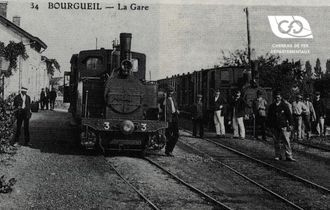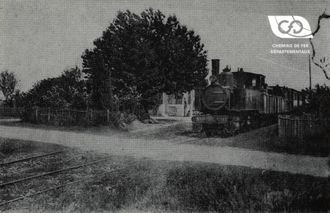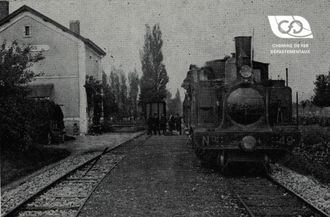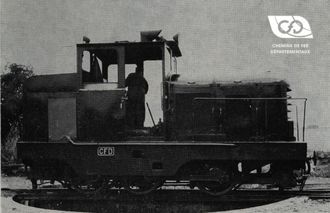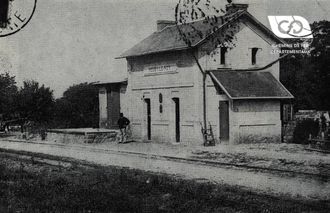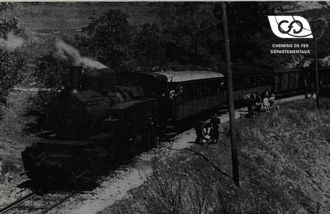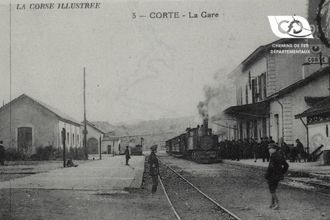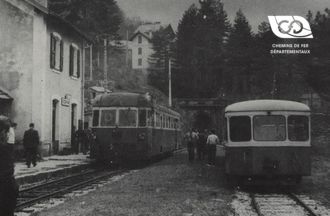Diesel locomotives, which had been used primarily for shunting and transfer services, with units of 600 to 1000 HP, were used for passenger services between remote centres, first west and south of Chicago and then throughout the country (fig. 2). Around 1948, the new traction mode rapidly extended to freight trains, and even practically stopped the then planned extension of some electrified lines. Currently, provides 84% of freight traffic, 86% of passenger service and 90% of shunting service; a comparison of fuel consumption in 1946 and 1953, for example, is an eloquent illustration of the evolution:
While in Europe the war stopped the development that had begun in 1939, diesel traction in the United States underwent a major development, which, by increasing in the post-war period, finally led to a real conversion of the traction system throughout the country.
| Consumption in thousands of tonnes | ||
| 1946 | 1953 | |
| Diesel: diesel ......................................................................................................................................................................................................................................... | 2.340 | 10.000 |
| Steam .................................................................................................................................................................................................................. [ fuel ............... | 110.00015.000 | 28.0004.150 |
In the near future, steam traction will hardly exist on only a few networks serving coal districts.
Manufacturers on the market of the major American networks
Four manufacturers: General Motors, A. L. C. O., Baldwin, and Fairbanks Morse, share the large American network market. The first and last ones (General Motors and Fairbanks) use 2-stroke engines, while the other two use supercharged 4-stroke engines; only the electric transmission is used. The power of the power units is generally between 1600 and 1900 HP for freight and mixed services, about 2500 HP for passengers (1). As these powers are very frequently insufficient, due to the high tonnages of American trains and the speeds used, three or four units operating as multiple units are often used.
(1 ) In accordance with European practice, these figures indicate the total power available at the output of the diesel engine and not, according to American practice, the only power available for traction, excluding auxiliaries.
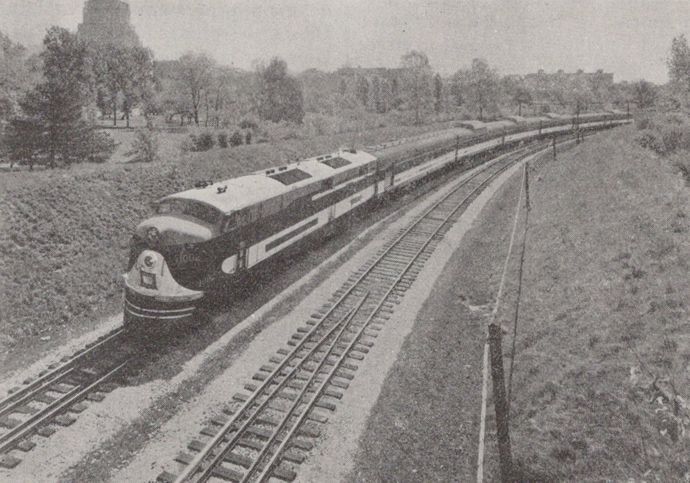
What were the causes of this rapid development?
They can be summed up as follows:
- Nature of the American rail network, comprising long lines, often single-track, run by very heavy trains, generally infrequent, making it possible to take advantage of the qualities of the diesel locomotive (long autonomy, long distances between operations, etc.)
- Relatively high availability of liquid fuels, the price of which is especially advantageous in the Central and Western regions. Thanks to the improved efficiency of the diesel locomotive, dieselisation has been able to expand very widely without increasing the overall consumption of the networks, of which the numerous oil-heated steam locomotives, especially in the West, were major consumers.
- Last but not least, financing facilities are offered to the American networks, to which the locomotives are leased at very low rates. On the other hand, the price of the machines has been lowered by mass production by a very small number of manufacturers, producing a small number of models, differing from one customer to another only in the exterior paintwork.
This relative uniformity of types is, moreover, one of the conditions for financing, since the market value of the locomotives is maintained if, for example, due to changes in traffic, units have to be transferred from one network to another. This argument takes on particular value in the United States, where several networks often compete on the same traffic flow.
Networks in other American countries and Australia
Following the previous example, Canada, Mexico, South America, and Australia, whose networks are fairly comparable to those of the United States, have also been developing for several years the use of diesel locomotives, most often imported from the United States, or built under license .
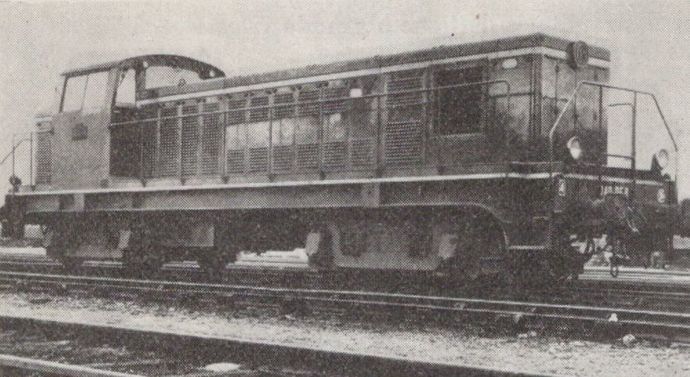
The networks of African countries
Over the past ten years, dieselisation of many African networks has been initiated, and often fully achieved, except in South Africa where coal is relatively abundant (North Africa, Madagascar, other parts of French Africa, Belgian Congo, Ethiopia, etc.).
In these regions, the economy provided by diesel traction is largely due to the poor quality or scarcity of water and the very low price of diesel oil compared to coal. On long penetration lines, which can be refuelled at one end only, the difference is even greater, to the benefit of diesel, which is less difficult to transport on foot.
The superiority of diesel traction for shunting services is unanimously recognized and its development in this field is facilitated by the fact that shunting requires above all high efforts developed at low speed, therefore a relatively low power-to-weight ratio, hardly exceeding about ten horsepower per ton. Such a result is easy to achieve, even with the use of slow engines and heavy transmissions.
The savings provided by diesel traction are very significant:
- The fuel consumption, which is particularly high with steam, due to the frequent stationing and intermittent running at essentially variable power, is, on the contrary, very low with diesel, whose good efficiency remains favorable for partial loads, and which does not consume during stationing. The equivalence is of the order of 12 to 15 kg of coal for one kilo of diesel.
- The elimination of frequent water supplies and fire breaks and the constant power available at all times ensure more intensive work within a given service time; the improvement can be as much as 25%. The diesel locomotive does not have to return frequently to the depot for refuelling and maintenance; absolutely continuous service in the station for several consecutive days is frequent.
- Single-agent operation is possible, even in difficult services.
The low cost price per operating hour with diesel traction also leads to its adoption in marshalling yards on electrified lines, so as to avoid equipping many service tracks.
What is the situation of diesel locomotives on European networks?
The diesel locomotive as a freight service technique
Several European countries (e.g. Germany, Denmark, France, Holland) are developing freight services on branch lines with medium power diesel locomotives , which are similar to heavy-duty locomotives in terms of power (600 to 1000 CY) and performance (maximum speed generally limited to 60/80 km/h) (fig. 3).
The daily journeys of diesel locomotives for branch lines often remain lower than the possibilities of the machines , because of the nature of the traffic; but the savings made are significant on fuel and driving expenses (a single agent), and also on maintenance costs, because it is often possible to reduce the number of tie-down depots: the relay points of electric locomotives and modern steam locomotives running on major arteries are, in fact, much further apart than in the past, and diesel traction on the tributary branch lines makes it possible to eliminate small intermediate depots, due to the significant reduction in refuelling and routine maintenance operations.
The steam locomotive is coming to an end..
On their high-volume main lines, European networks are mainly developing electric traction, and significant numbers of powerful diesel locomotives have only recently been ordered ; the purpose of such orders is often to define, on a sufficiently large scale, the various cost price items and thus to establish the division between the lines eligible for both modes of traction.
In Germany, due to the age of the fleet of steam locomotives for passenger trains, 2000 HP B-B diesel locomotives with high-speed engines and hydraulic transmissions are used for express train trailers, whose timetables can be improved in this way (Fig. 4).

In England, five diesel electric locomotives of two different types (CoCo and 1' CoCo 1') from 1600 to 2000 HP are in service; a programme is being studied which would involve the use of 2000 HP mainline locomotives.
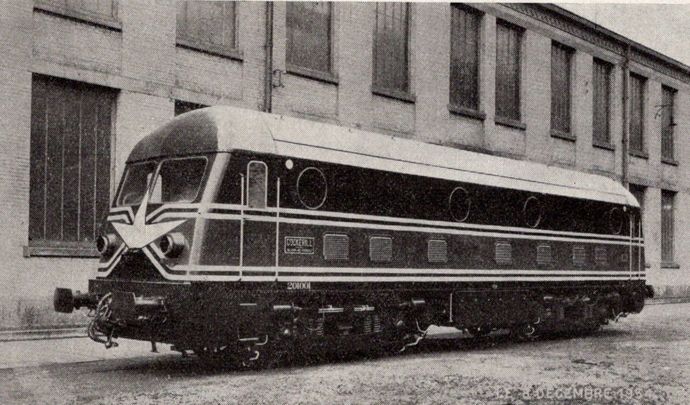
In Belgium, this year will see the entry into service of the 55 B-B locomotives (fig. 5) and 40 C-C locomotives (fig. 6) of 1750 HP built by Cockerill and the Anglo-Franco-Belgian.
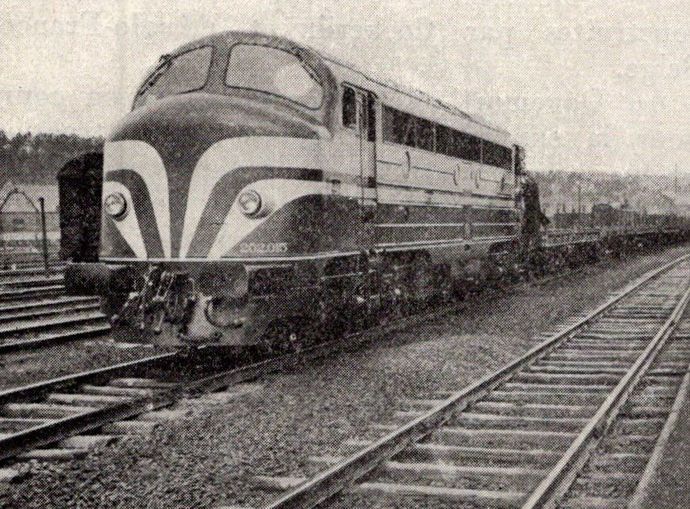
In Denmark, a programme is under way for the complete abolition of steam traction, which is still used on main lines for heavy passenger and freight trains. In particular, 4 1650 HP C-C locomotives similar to the Belgian C-C locomotives are in service and 20 more are under construction, in addition to some other Danish-designed machines.
In France, the S. N. C. F. will receive this year a first tranche of 20 2000 HP C-C locomotives for the non-electrified sections of the Grande Ceinture de Paris line; this is a transfer service for heavy and numerous freight trains between marshalling yards in the Paris region. On the other hand, it is planned to serve entirely by diesel traction the lines located south of the Loire and included between the Ocean and the Tours-Bordeaux electrified artery. In addition to the 800 HP locomotives for secondary lines, 15 102-ton C-C locomotives have just been ordered for this purpose, for mixed services, equipped with 2 high-speed 900 HP engines and electric transmissions (fig. 7).
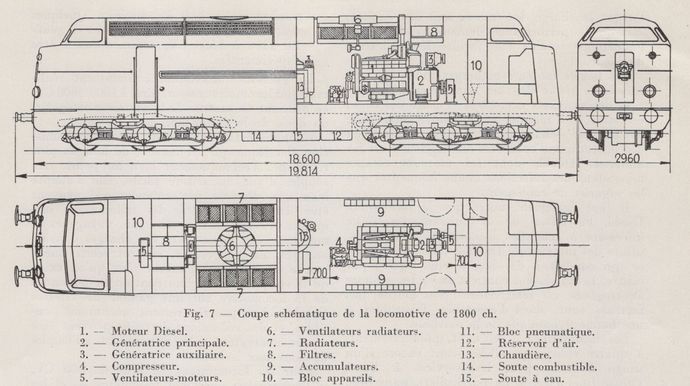
Finally, the Portuguese network, which is going to start the electrification in single-phase current 50 periods of two important arteries, intends to continue the dieselization started several years ago (American ALCO locomotives of 1600 HP); the Spanish Railways, for their part, place an order for about fifteen similar locomotives.
source : Excerpt from the article L'EVOLUTION DE LA LOCOMOTIVE DIESEL by Ch. TOURNEUR, Chief Engineer at the S. N. C. F. appeared in the Revue Universelle de Mines July 55





